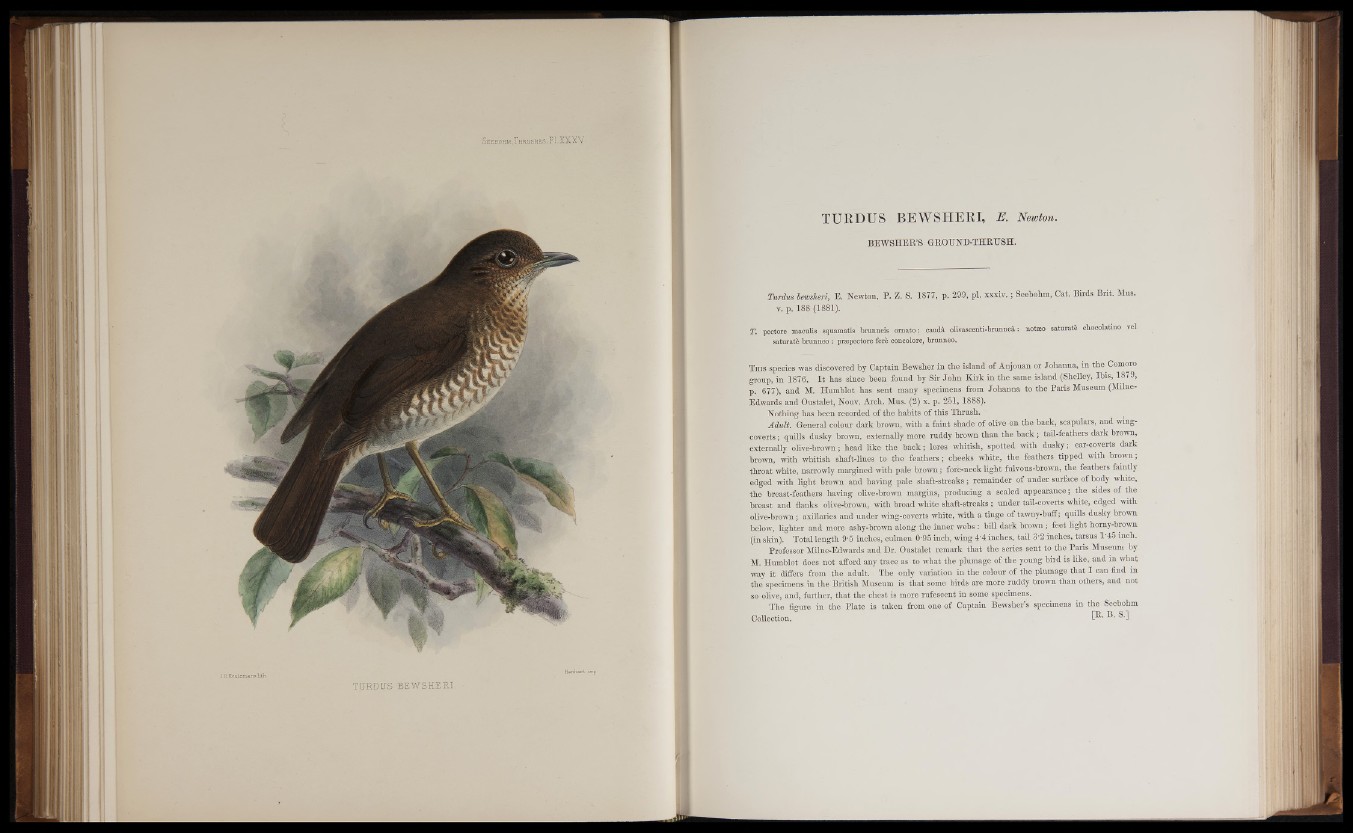
■I BEWSHE RI.
TURDUS BEWSHERI, E. Newton.
BEWSHER’S GROTJND-THRTTSH.
Turdus tewsheri, E. Newton, P. Z. S. 1877, p. 299, pi. xx x iv .; Seebohm, Cat. Birds Brit. Mus.
v. p. 188 (1 8 81§y£
T. pectore maculis squamatis brunneis omato: eaudA olivascenti-brunned: notffio saturate chocolatino vel
saturate bruuneo : prsepectore fere concolore, brunneo.
T his species was discovered by Captain Bewsher in the island of Anjonan or Johanna, in the Comoro
group, in 1876. It has since been found by Sir John Kirk in the same island (Shelley, Ibis, 18/9,
p. 677), and M. Humblot has sent many specimens from Johanna t o t h e Paris Museum (Milne-
Edwards and Oustalet, Nouv. Arch. Mus. (2) x. p. 251, 1888).
Nothing has been recorded of the habits of this Thrush.
Adult. General colour dark brown, with a faint shade of olive on the back, scapulars, and wing-
• coverts; quills dusky brown, externally more ruddy brown than the back; tail-feathers dark brown,
externally olive-brown; head like the. back; lores whitish, spotted with dusky; ear-coverts dark
brown, with whitish shaft-lines to the feathers; cheeks white, the feathers tipped with brown,
throat white, narrowly margined with pale brown; fore-neck light fulvous-brown, the feathers faintly
edged with light brown and having pale shaft-streaks; remainder of under surface of body white,
the breast-feathers having olive-brown margins, producing a scaled appearance; the sides of the
breast and flanks olive-brown, with broad white shaft-streaks ; under tail-coverts white, edged with
olive-brown; axillaries and under wing-coverts white, with a tinge of tawny-buff; quills dusky brown
below, lighter and more ashy-brown along the inner webs : bill dark brown; feet light homy-brown
(in skin). Total length 9-5 inches, culmen 0*95 inch, wing 4'4 inches, tail 8-2 inches, tarsus 1 45 inch.
Professor Milne-Edwards and Dr. Oustalet remark that the series sent to the Paris Museum by
M. Humblot does not afford any trace as to what the plumage of the young bird is like, and in what
way it differs from the adult. The only variation in the colour of the plumage that I can find in
the specimens in the British Museum is that some birds are more ruddy brown than others, and not
so olive, and, further, that the chest is more rufescent in some specimens.
The figure in the Plate is taken from one of Captain Bewsher’s specimens in the Seebohm
Collection. B B ‘ l |